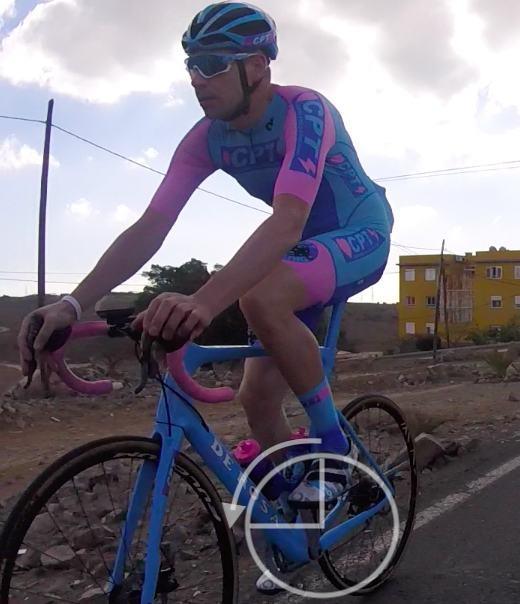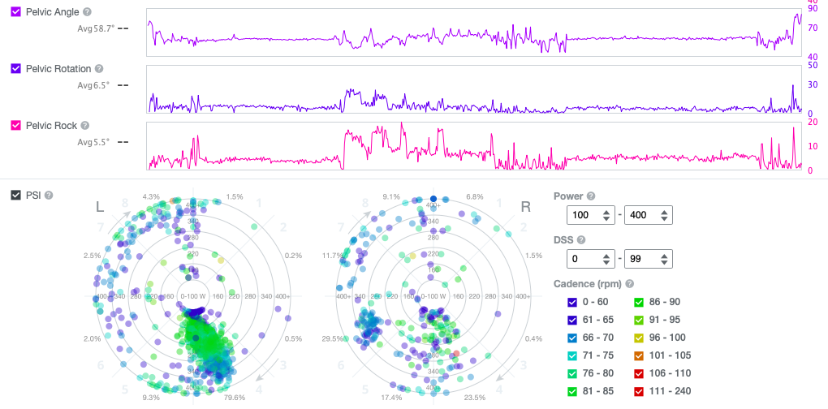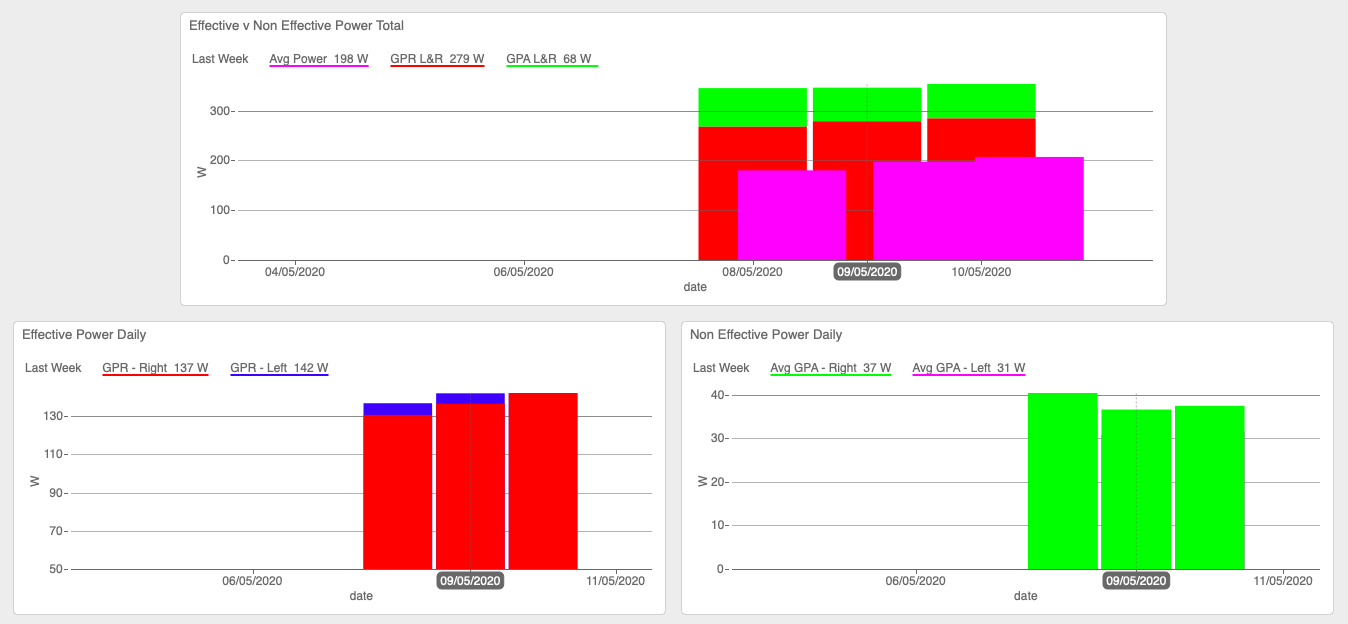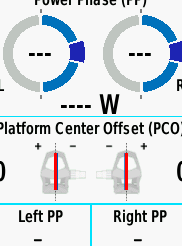
Analysing top dead centre and the first quarter of your pedal stroke can indicate solutions to improve technique.
May 14th 2020, By Richard Rollinson
Let’s look at what pedalling imbalance issues can potentially be worked on with the aim of improving Strength is specific muscle groups:

Solutions can be found to fix imbalance and technique issues with analysis of your pedalling and motion metrics.
A difference in power phase start angle between left and right is often reflected in a difference in the angle of your foot in the first quarter of the pedal stroke from top dead centre, with the heel dipped and toe up that may be predominant on one side more than the other. This can indicate a weaker calf on the leg with heel down.
This can mean that the opposing muscle groups can be significantly stronger, which would be the opposing calf and upper leg muscles on the same leg and potentially weaker upper leg muscles on the opposing side.
To work on this within your regular strength training workouts;
Pelvic and torso rock can be a result of a weaker core that is not able to make the most of the strength in your legs. By increasing core strength through a variety of weights and bodyweight exercises, this can reduce pelvic and torso rock as your extra core strength builds a more solid foundation to keep your upper body and hips more still to make more use of the power available in your legs.
While we have now covered some pedalling imbalance issues that can be fixed through exercises and technique, there are some that can be improved through bike fit and have a knock on effect to enable you to carry out those pedalling techniques and skills easier.
Let’s look at what pedalling imbalance issues can potentially be worked on through bike fit:

Gross power released (power produced being used to move your bike forward) and absorbed (non useful power) is one of the most relevant metrics to track your pedalling efficiency.
Excessive pelvic rock can be a sign of too high saddle height, as you have to stretch more to reach bottom dead centre of your pedal stroke, this reaching leads to a tilt down in the pelvis and a tilt up on the opposite side. This often has a knock on effect to having less control at the bottom of your pedal stroke; lower GPR and higher GPA. This can be fixed by lowering to a more optimal saddle height. Pelvic rotation can be opened out or close with shorter or longer crank length. Both of these adjustments can also impact your leg angle.
PCO can be pushed away from your bottom bracket through Q factor pedal axle spacers, if your score is in minus figures and more power is produced closer in towards your bike frame. Cleat shims can also impact PCO by pitching your foot higher and further in towards your bottom bracket.

Where you produce the most torque on your pedals and where you put most power in through your pedal stroke can be measured through most dual sided pedal power meters.
Custom training plans with a 360º approach to your unique physiology and goals with actionable feedback to help you become a faster cyclist, explained simply with a personal touch from an expert cycling coach.
© 2024 CPT Cycling